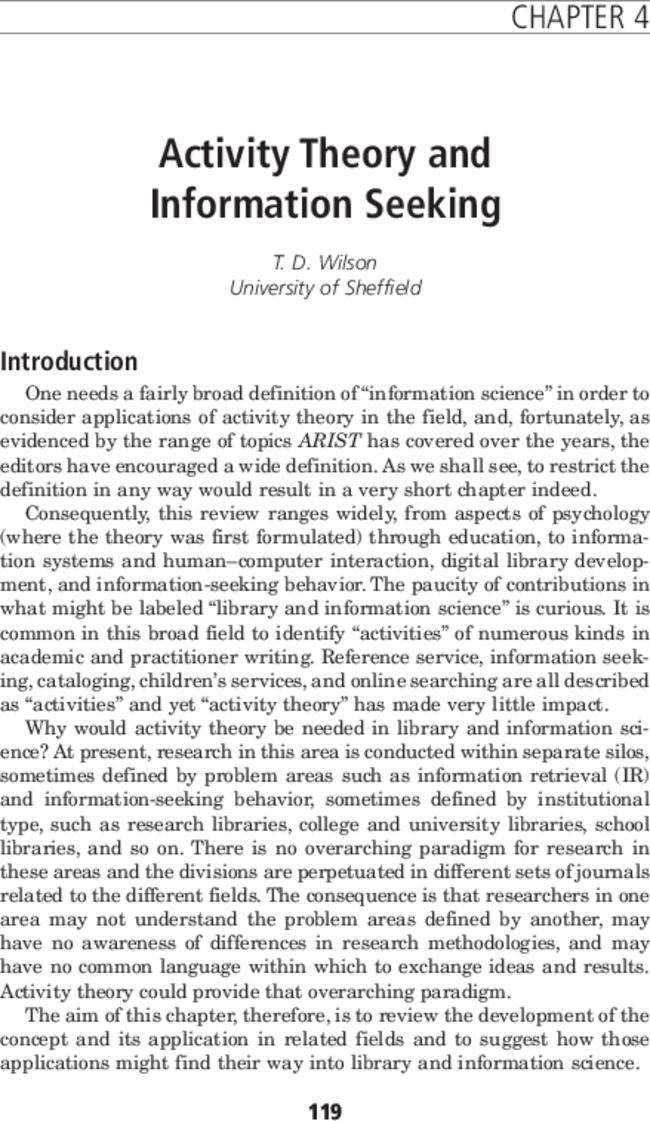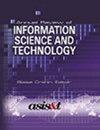Activity theory and information seeking
Annual Review of Information Science and Technology
Pub Date : 2009-11-05
DOI:10.1002/aris.2008.1440420111
引用次数: 79
Abstract
One needs a fairly broad definition of “information science” in order to consider applications of activity theory in the field, and, fortunately, as evidenced by the range of topics ARIST has covered over the years, the editors have encouraged a wide definition. As we shall see, to restrict the definition in any way would result in a very short chapter indeed. Consequently, this review ranges widely, from aspects of psychology (where the theory was first formulated) through education, to information systems and human–computer interaction, digital library development, and information-seeking behavior. The paucity of contributions in what might be labeled “library and information science” is curious. It is common in this broad field to identify “activities” of numerous kinds in academic and practitioner writing. Reference service, information seeking, cataloging, children’s services, and online searching are all described as “activities” and yet “activity theory” has made very little impact. Why would activity theory be needed in library and information science? At present, research in this area is conducted within separate silos, sometimes defined by problem areas such as information retrieval (IR) and information-seeking behavior, sometimes defined by institutional type, such as research libraries, college and university libraries, school libraries, and so on. There is no overarching paradigm for research in these areas and the divisions are perpetuated in different sets of journals related to the different fields. The consequence is that researchers in one area may not understand the problem areas defined by another, may have no awareness of differences in research methodologies, and may have no common language within which to exchange ideas and results. Activity theory could provide that overarching paradigm. The aim of this chapter, therefore, is to review the development of the concept and its application in related fields and to suggest how those applications might find their way into library and information science. CHAPTER 4

活动理论与信息搜寻
本文章由计算机程序翻译,如有差异,请以英文原文为准。
求助全文
约1分钟内获得全文
求助全文

 求助内容:
求助内容: 应助结果提醒方式:
应助结果提醒方式:


